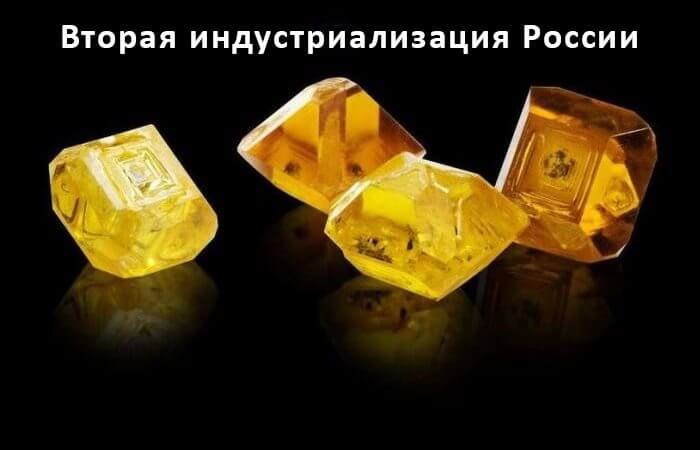Synthetic diamond production in Russia buy fine quality Chinese and Soviet price

Synthetic diamonds, types, receiving, production and cultivation.
Synthetic diamonds have the same chemical and physical characteristics as natural diamonds. Diamond is a unique material with outstanding mechanical, chemical and electronic properties that makes its use in a variety of industries in demand.
Synthetic diamonds, production, manufacture and cultivation of synthetic diamonds
Properties of high-purity synthetic diamond single crystals
Properties of semiconductor single crystal synthetic diamond
Production of synthetic diamonds
Other forms of carbon: graphene, carbyne, diamond, fullerene, carbon nanotube, “Vickery”.
Synthetic diamonds, production, manufacture and cultivation of synthetic diamonds:
Synthetic diamonds, or in other words, diamondsgrown in the laboratory, have essentially the same chemical and physical characteristics as natural diamonds.
Diamond is a unique material with outstanding mechanical, chemical and electronic properties.
Recently synthetic diamonds are attracting more attention due to improve the methods of growth and the emergence of large synthetic diamonds of gem quality and in various colors from “colorless” to the ordinary “color” – fantasy.
Currently, there are two main methods of growing synthetic gem-quality diamonds:
1) HPHT (High Pressure High Temperature) – a method of growing diamond at high pressures and temperatures, or the temperature gradient method;
2) CVD (Chemical vapour deposition) – a method of chemical deposition.
Grown synthetic diamonds in the form of single crystaland polycrystalline diamondshaving a variety of uses and properties.
HPHT synthetic diamonds:
The growth of HPHT-diamonds takes place in a special cell filled with graphite and metal–catalyst (cobalt, Nickel), solvent graphite by heating and allowing the carbon atoms to Deposit on the diamond seed at the base of the cell. In the growth cell are also additional components – aluminium, titanium or boron, which affect the color of the growing diamond. Nitrogen isinvolved in the growth of the diamond lattice and the underlying yellow/orange color of the diamond (nitrogen absorbs light in the UV to blue range of the optical spectrum) enters into the growth cell from the surrounding atmosphere. Aluminium and titanium are metals-getters, which react with nitrogen atoms and do not allow them to integrate into the growing diamond lattice, thereby reducing the saturation of the yellow components in the color of the diamond right down to the total absence of color.
Growth cell is placed in a press, providing a pressure of about 55 000 atmospheres with simultaneous heating of the cell up to 1500°C. Thus, in the laboratory simulated natural conditions for the growth of diamond. Depending on the temperature distribution along the cell changes and growth rate – the higher the difference of temperatures (20-50°C), the greater the growth rate and the more metallic impurities (metal catalyst) are introduced into the synthetic diamond during the growth and are an important characteristic in determining its nature. The duration of growth of diamond under high pressures and temperatures in the tens and even hundreds of hours.
HPHT technology allows the most simple and quick way to grow synthetic diamonds are yellow (they contain a large amount of single nitrogen atoms embedded in the diamond lattice and promotes its most rapid growth). Additional impact on the already synthesized diamond crystals allows you to change the color in a variety of colors.
To obtain synthetic diamonds green color is an additional exposure to irradiation by the electron beam after the final cut of the crystal.
Synthetic diamonds grey, blue and blue colors containing atoms of boron, is also embedded in the diamond lattice and contribute to its growth. However, boron-containing diamonds are growing slower than diamond containing nitrogen.
Colorless synthetic diamonds (the so-called Beattie) do not contain recorded using IR-spectroscopy of nitrogen or boron.
26 may 2015 the international Gemological Institute (IGI) in Hong Kong reported that their laboratory was certified by the largest synthetic colorless diamond in the world. Weight a unique diamond of 10.02 carats. The stone color — E, clarity — VS1. The raw material of the future diamond was a record by weight of synthetic Beatty diamond (32,26 carats), which was grown by the HPHT method, only less than 300 hours of Russian company.
CVD synthetic diamonds:
CVD technique allows to create single-crystal diamonds up to 10 carats without using extremely high pressures, such as in HPHT technology. The growth of single crystal CVD diamond also begins with a seed (substrate) – single crystal HPHT diamond with high perfection of the atomic-smooth surface. The substrate is placed in a flask CVD-reactor filled with a mixture gas of hydrogen (H2, 95-99%) and methane (CH4, 1-5%) at a pressure around 1/10 atmosphere. The gas mixture is heated by a beam of microwaves to a temperature of about 1000°C and forms a plasma – a mixture of individual atoms and ions of hydrogen H and carbon C. the carbon Atoms are deposited on the surface of diamond seed crystals, the temperature of which is about 800°C, gradually forming layers of CVD diamond.
In the growth process forms almost colourless or brownish diamond, the size of which is limited by the size of the diamond substrate. CVD diamonds in thickness rarely exceed 1-3 mm. If precipitating carbon on single crystal substrate, and silicon or polycrystalline diamond, finally got the polycrystalline disc with a thickness of 1 mm, which does not possess the unique properties of single crystal and therefore has a limited application in electronics and optics.
Most CVD diamonds are brown subsequently undergo additional processing at HPHT technology that allows you to lighten the samples, moving to a higher color groups.
Properties of high-purity synthetic diamond single crystals:
– size up to 8 mm;
– the concentration of nitrogen of 0.5 – 2.0 ppm;
– the thermal conductivity of up to 2200 W/(m·K);
– color: transparent;
– the range of optical transparency from 225 nm to 25 microns;
– high perfection of crystalline structure;
– low level of luminescence (ratio of the intensity of the spectrum of the second order of cattle to the fluorescent background ~15 – 30);
– electrical resistivity above 1012 Ohm·cm;
– a hardness of not less than 105 GPA.
Properties of semiconductor single crystals of synthetic diamond:
– size up to 8 mm;
– ionization energy acceptor 0,19-0,37 eV;
– electrical resistivity of 0.1–109 Ohm·cm;
– color from light blue to black;
– the boron content up to 300 ppm.
Production of synthetic diamonds:
Synthetic diamond manufactured the following products:
– diamond nanopowders, submicron powders, microporosity, grinding powders,
– diamond suspension and diamond paste,
– diamonds of any size from 0.01 carat to 10 carats and above. Various shapes cut from classic to exclusive, variety of colors (colorless, pink, blue,etc.)
– diamond plate
– diamond Windows
– single crystals,
– polycrystals,
– preparations for production of the eye lens, blades for eye surgery,etc.
– anvil (diamond anvils).
The use of synthetic diamonds:
– jewelry products
– optics. Crystal clear diamond plate type IIa large (for example, half-inch) can be used as UV and IR Windows, laser components, optics, lenses for gyrotrons, monochromators and focusing of x-ray equipment, sensors and detectors of particles and even to improve the transmission of information.
– power and microelectronics. In the process of growing pure colorless synthetic diamonds of type IIa have the option to add the required boron concentration to achieve the best conductivity of the material to diamonds of the type IIb and IIa+IIb, used in electro-chemical industry. Such diamonds have chemical stability, greater capacity and resistance, which completely distinguish diamond from other materials and make it popular in many branches of the electrochemical industry as an electrode in the electrolyte component in the transistors and thyristors, semiconductor component, a key element of medical and microwave equipment
– radiation detectors and monitors. Monocrystalline diamond with a low level of dislocations has a large working area (up to 90% of the total) and surface sensitivity, making it a promising material for the detection of particles in the radiation environment. In comparison with sensors based on silicon (Si) used in the present diamond sensors are capable of detecting much more signals
– quantum computers, data transmission. Perfect atomic structure of the diamond is ideal for research in the field of quantum Photonics and optics. The electron spin in the NV center, the nuclear defect level in the diamond proved to be an effective medium for information storage and quantum computing. Unalloyed pure synthetic diamonds of type IIa with a low level of dislocations is one of the most promising solutions in this area
– heat sink element. Thermal conductivity of diamond is many times higher than its main competitors, namely silicon (Si), silicon carbide (SiC) and gallium-nitride (GaN). The thermal conductivity of diamond wafers is in the range of 1000 to 2200 W/MK. Synthetic diamond is able to ward off the heat completely or change the temperature in excess of the powerful sources to prevent overheating, damage and failure of a working module. The diamond heat sink of the substrate allow to increase the power of the modules under extreme conditions and increase their working life. It is of great importance in the semiconductor industry, which is currently indispensable for the development of ultra-powerful and fast processors
– manufacturing industry and other mechanical applications. Diamond cutting tool, anvil (anvil) in the pressure vessel, bearings, hourly items,etc.
– substrate for epitaxy (CVD). NRNT diamond plates are an ideal substrate for building up additional layers by the CVD method.



